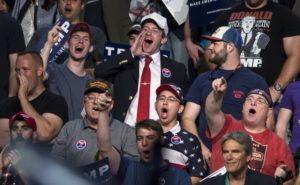I’m enjoying listening to and reading comments from Donald J. Trump’s fans — some of whom are friends of mine — boast about the size of the rallies he is attracting.
The Republican candidate for president’s rallies, they keep saying, are far bigger than those who listen to Democratic candidate Hillary Rodham Clinton.
That’s proof, they say, that Trump is making a comeback. That he’ll win in the end and be elected the 45th president of the United States.
I feel the need to remind them all of this indisputable fact … which is that big crowds don’t necessarily translate into big vote totals.
* George McGovern drew big crowds in 1972. They were loud, boisterous, enthusiastic and dedicated to their man. I know. I was among them. He lost the election that year by 23 percentage points to President Nixon.
* Gary Hart drew big crowds, too, in 1984 as he campaigned for the Democratic nomination. His fans were zealous. He didn’t even get nominated. The Democrat who did, Walter Mondale, lost “bigly” to President Reagan.
* Twenty years earlier, Barry Goldwater had the fervent support of the GOP’s conservative movement. They packed auditoriums and stadiums to hear their guy. Goldwater lost the 1964 election to President Johnson; yep, that was a landslide, too.
* Bernie Sanders just this year was drawing huge crowds. The crowds loved him. Did he win the nomination? No. Clinton did.
This election will decided by which candidate has the better “ground game.” Who between them has an organization ready to mobilize voters? Who is better equipped to target voting blocs? Which of them is going to develop the better ad campaign?
Crowd size? Sure, it’s nice to speak to more than just family and friends. The size of the crowds or the decibel level of their cheers, though, do not guarantee a thing on Election Day.
